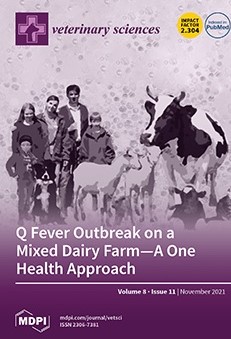Ver ítem
- xmlui.general.dspace_homeCentros e Institutos de InvestigaciónCICVyA. Centro de Investigación en Ciencias Veterinarias y AgronómicasInstituto de BiotecnologíaArtículos científicosxmlui.ArtifactBrowser.ItemViewer.trail
- Inicio
- Centros e Institutos de Investigación
- CICVyA. Centro de Investigación en Ciencias Veterinarias y Agronómicas
- Instituto de Biotecnología
- Artículos científicos
- Ver ítem
Baculovirus vectors induce the production of interferons in swine : their potential in the development of antiviral strategies
Resumen
The huge variety of viruses affecting swine represents a global threat. Since vaccines against highly contagious viruses last several days to induce protective immune responses, antiviral strategies for rapid control of outbreak situations are needed. The baculovirus Autographa californica multiple nucleopolyhedrovirus (AcMNPV), an insect virus, has been demonstrated to be an effective vaccine vector for mammals. Besides the ability to display or
[ver mas...]
The huge variety of viruses affecting swine represents a global threat. Since vaccines against highly contagious viruses last several days to induce protective immune responses, antiviral strategies for rapid control of outbreak situations are needed. The baculovirus Autographa californica multiple nucleopolyhedrovirus (AcMNPV), an insect virus, has been demonstrated to be an effective vaccine vector for mammals. Besides the ability to display or transduce heterologous antigens, it also induces strong innate immune responses and provides IFN-mediated protection against lethal challenges with viruses like foot-and-mouth disease virus (FMDV) in mice. Thus, the aim of this study was to evaluate the ability of AcMNPV to induce IFN production and elicit antiviral activity in porcine peripheral blood mononuclear cells (PBMCs). Our results demonstrated that AcMNPV induced an IFN-α-mediated antiviral activity in PBMCs in vitro. Moreover, the inoculation of AcMNPV in piglets led to the production of type I and II IFNs in sera from inoculated animals and antiviral activities against vesicular stomatitis virus (VSV) and FMDV measured by in vitro assays. Finally, it was demonstrated that the pseudotyping of AcMNPV with VSV-G protein, but not the enrichment of the AcMNPV genome with specific immunostimulatory CpG motifs for the porcine TLR9, improved the ability to induce IFN-α production in PBMCs in vitro. Together, these results suggest that AcMNPV is a promising tool for the induction of IFNs in antiviral strategies, with the potential to be biotechnologically improved.
[Cerrar]

Autor
Fuente
Veterinary Sciences 8 (11) : 278 (Noviembre 2021)
Fecha
2021-11
Editorial
MDPI
ISSN
2306-7381
Documentos Relacionados
Formato
pdf
Tipo de documento
artículo
Proyectos
(ver más)
INTA/2019-PD-E5-I105-001, Patógenos animales: su interacción con el hospedador y el medio ambiente. Impacto en productividad, ecosistemas, sanidad animal y salud pública en el marco ?Una Salud?
Palabras Claves
Derechos de acceso
Abierto
 Excepto donde se diga explicitamente, este item se publica bajo la siguiente descripción: Creative Commons Attribution-NonCommercial-ShareAlike 2.5 Unported (CC BY-NC-SA 2.5)
Excepto donde se diga explicitamente, este item se publica bajo la siguiente descripción: Creative Commons Attribution-NonCommercial-ShareAlike 2.5 Unported (CC BY-NC-SA 2.5)


